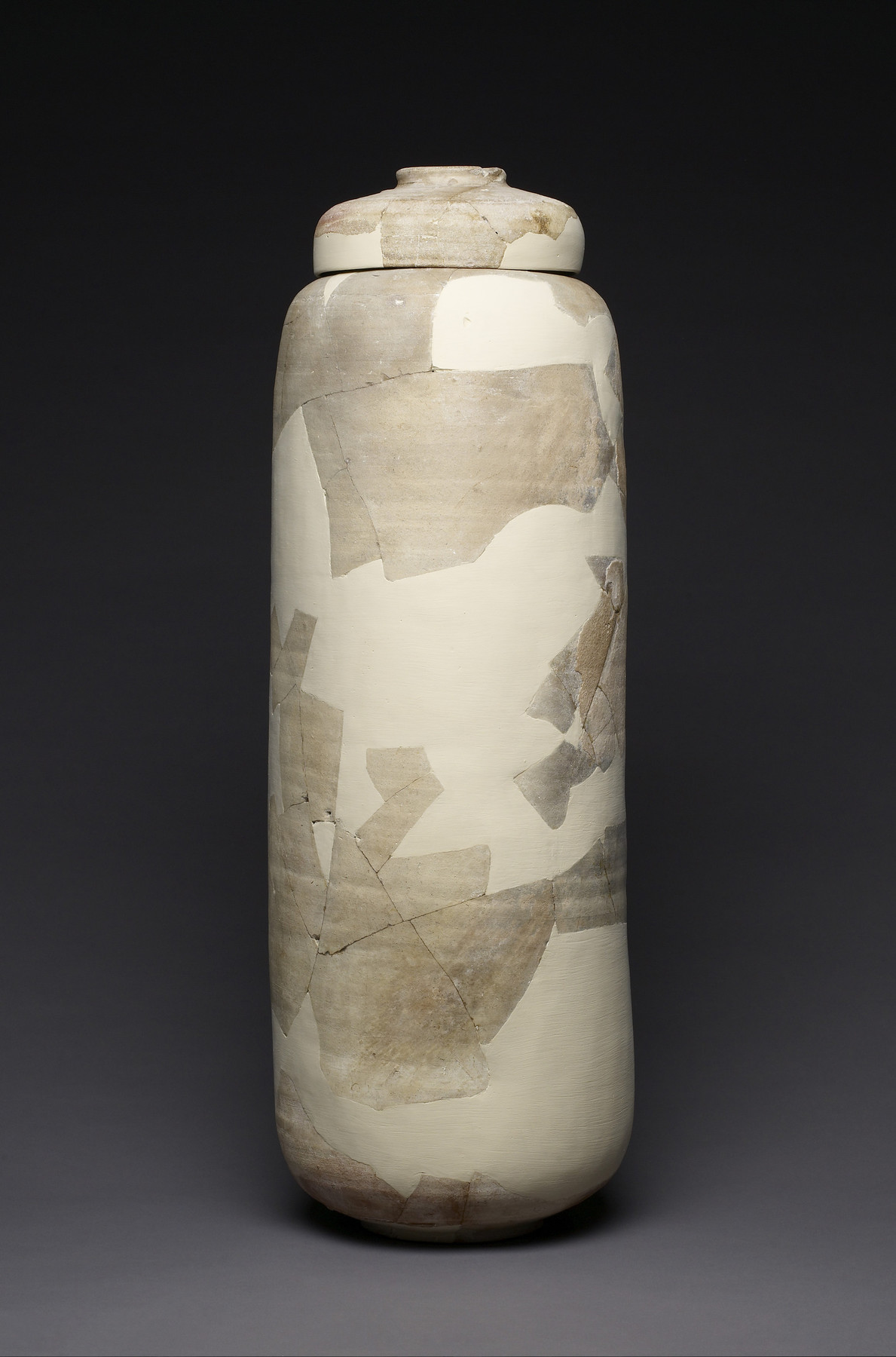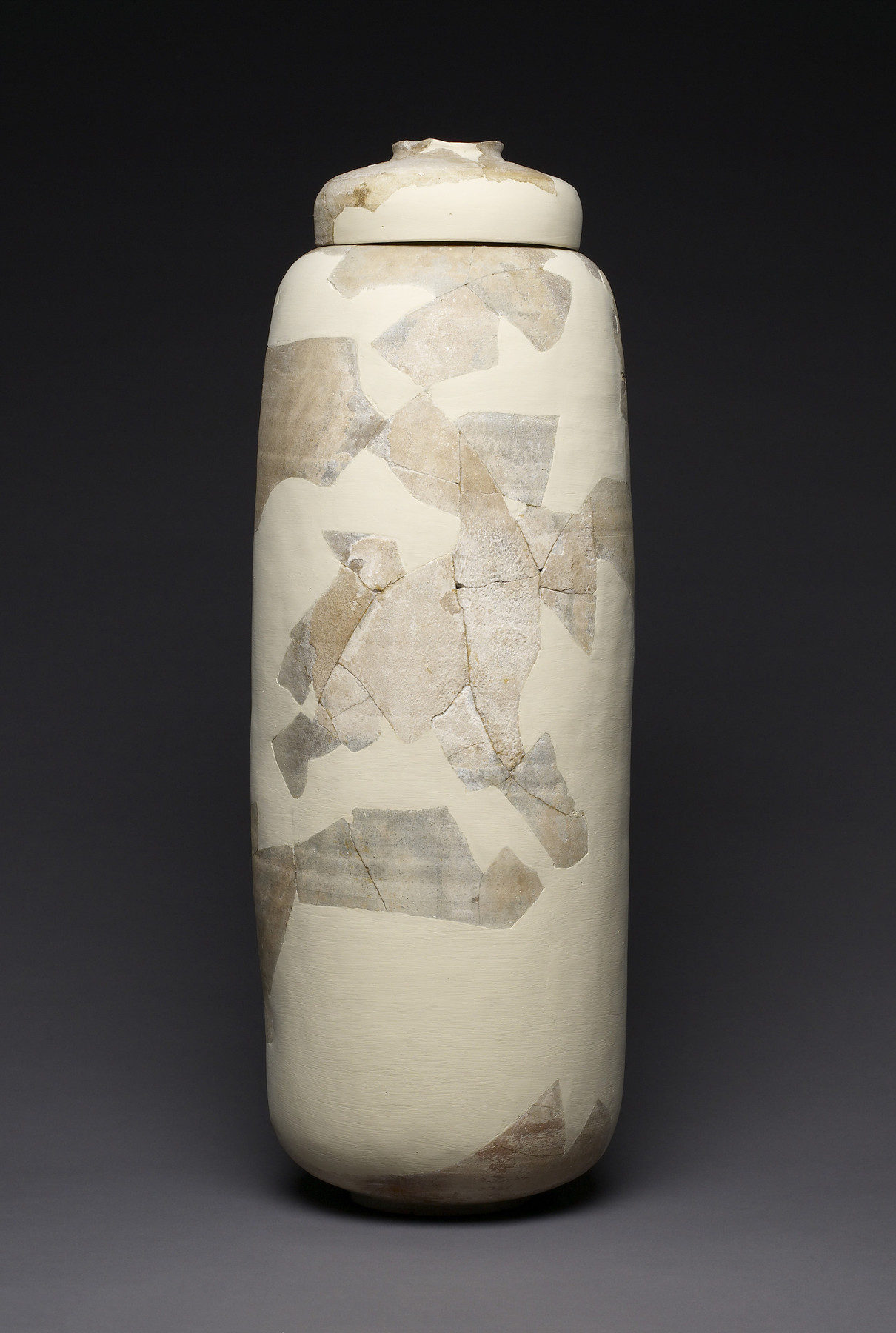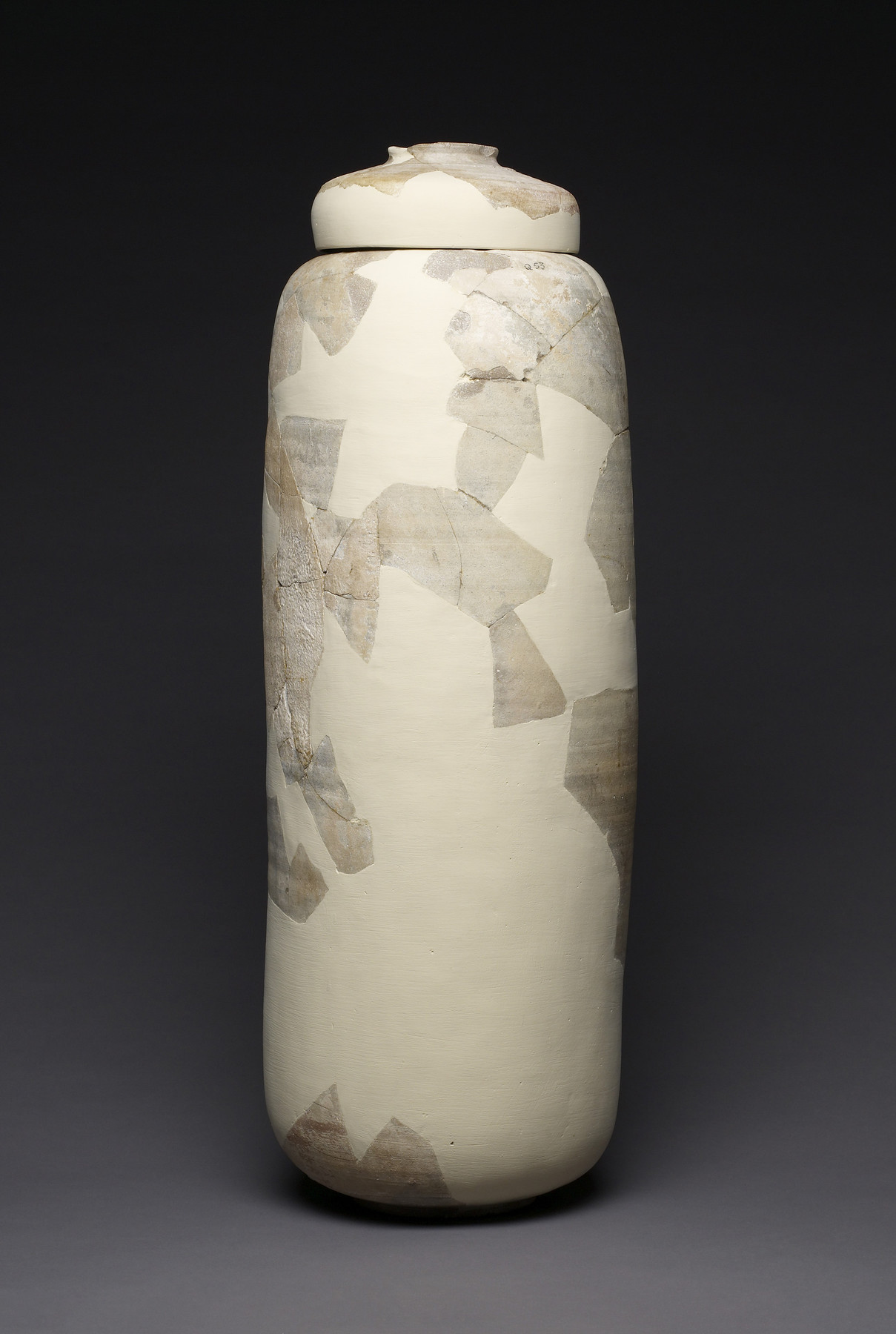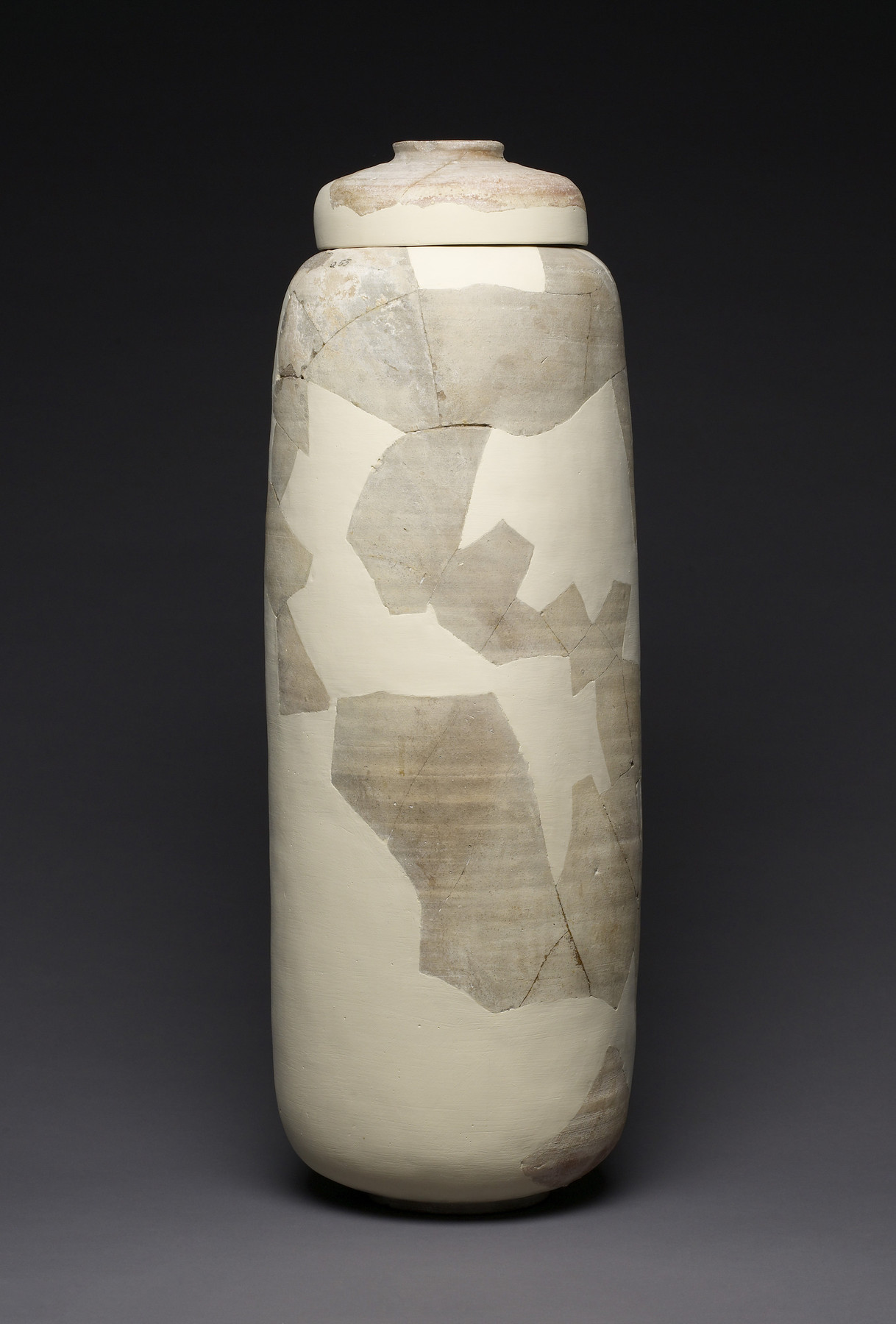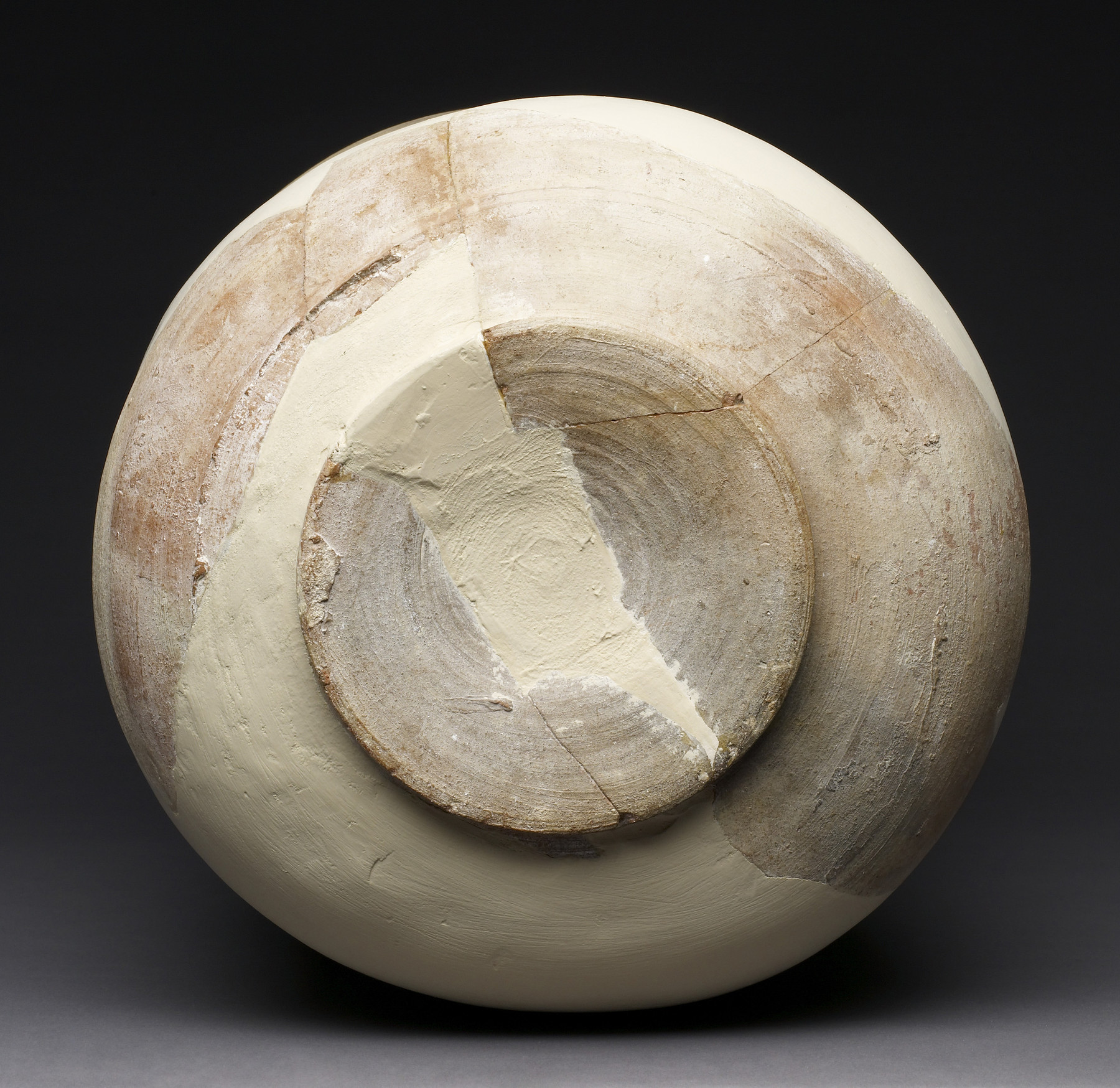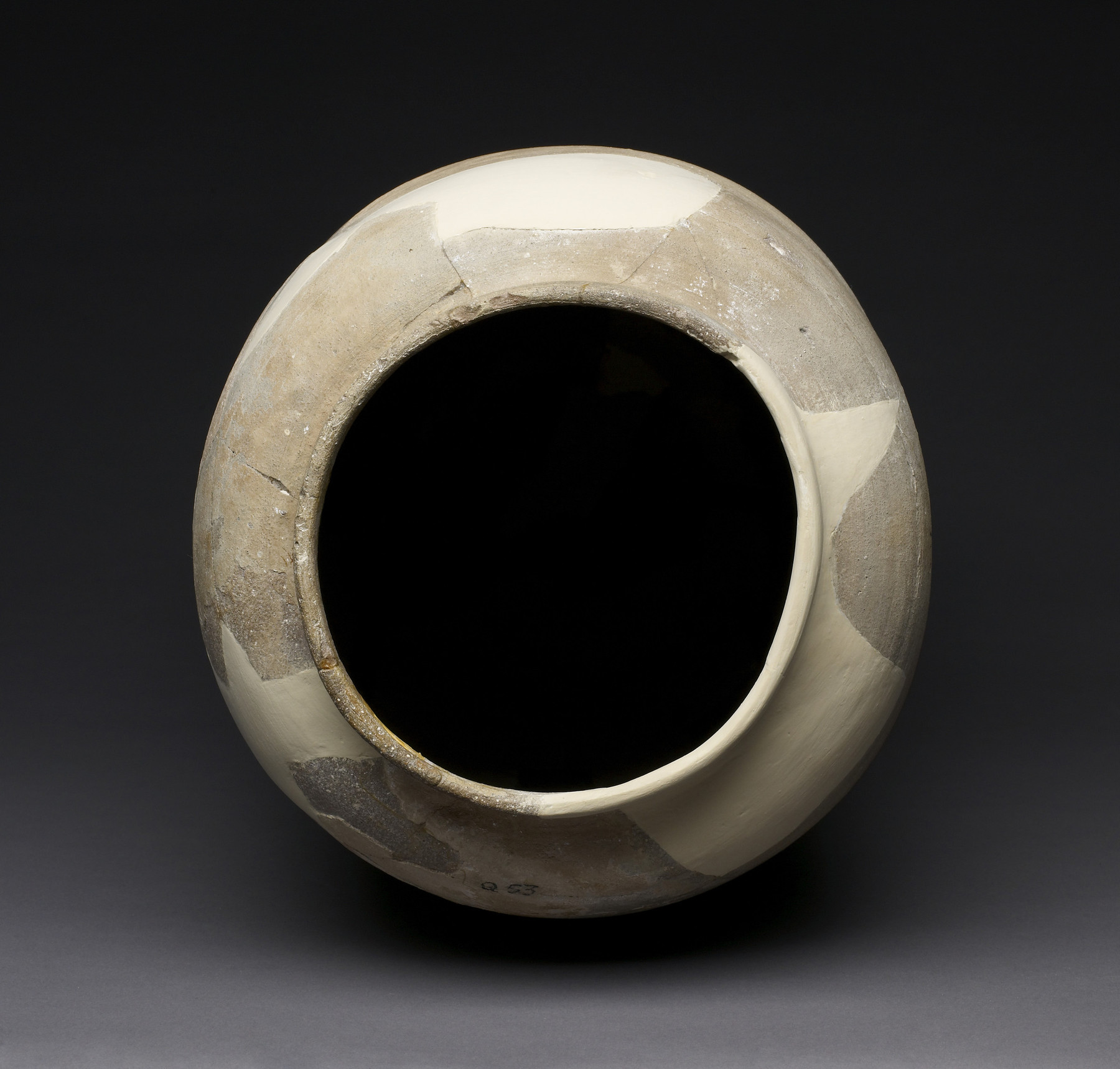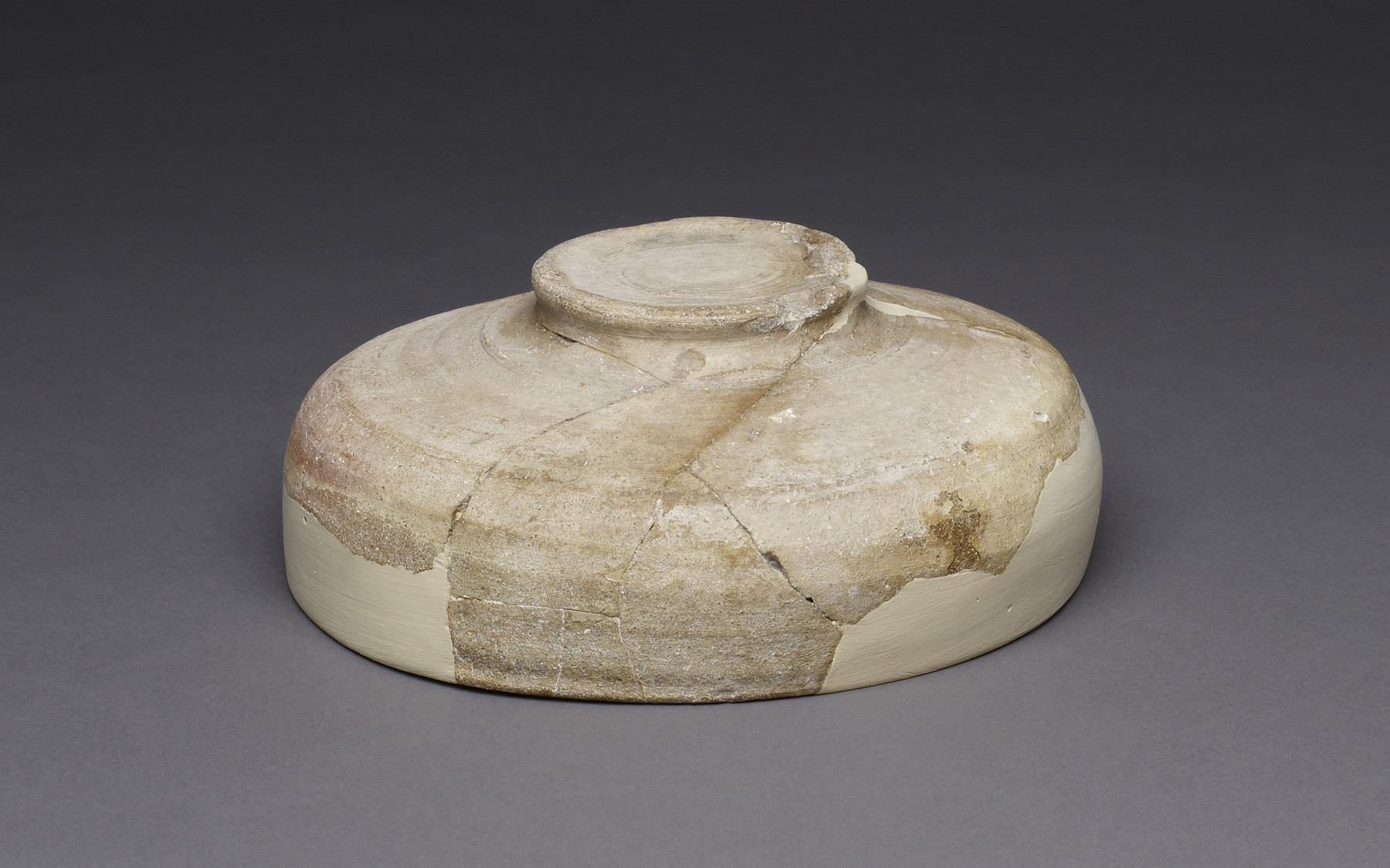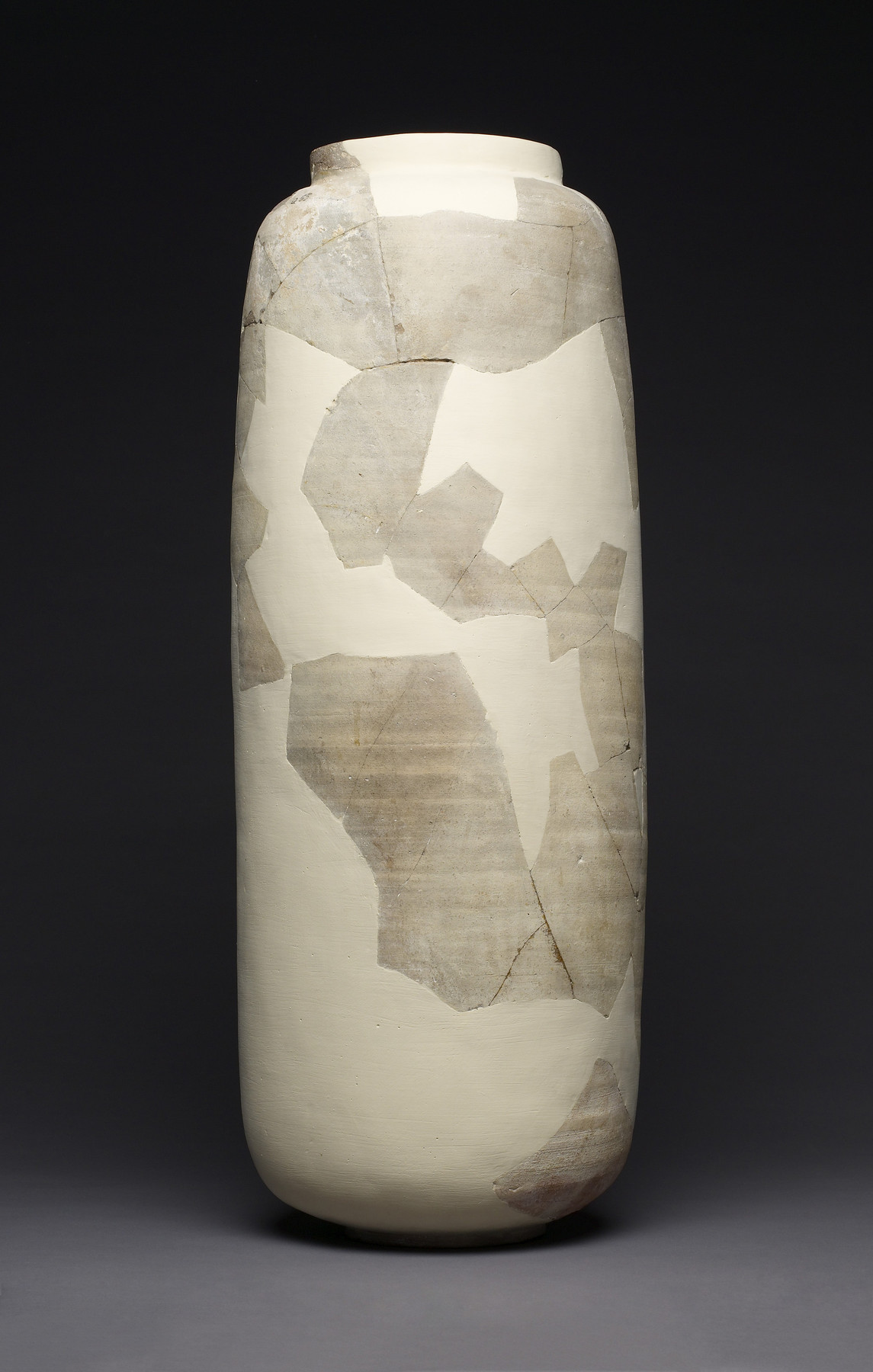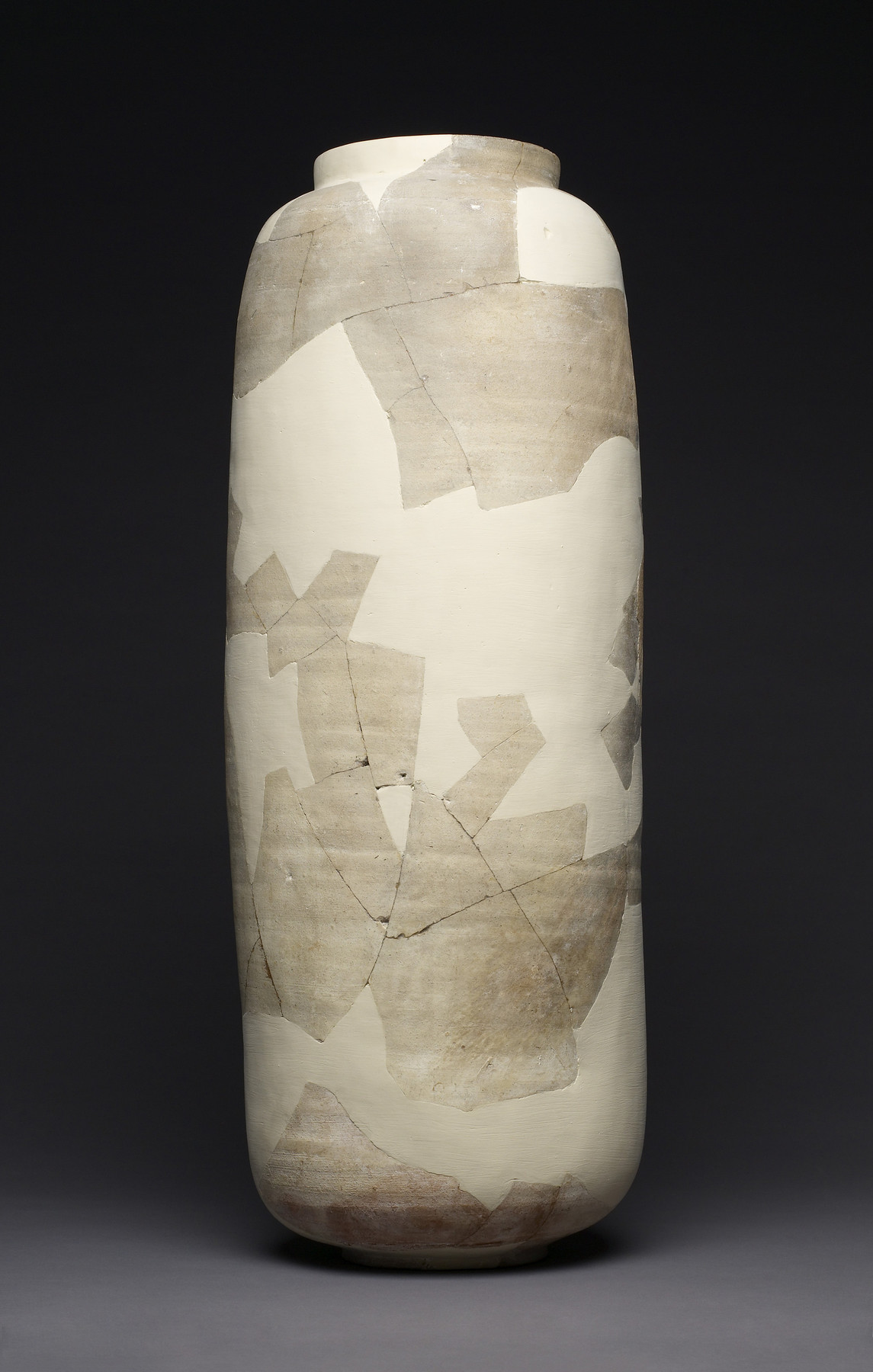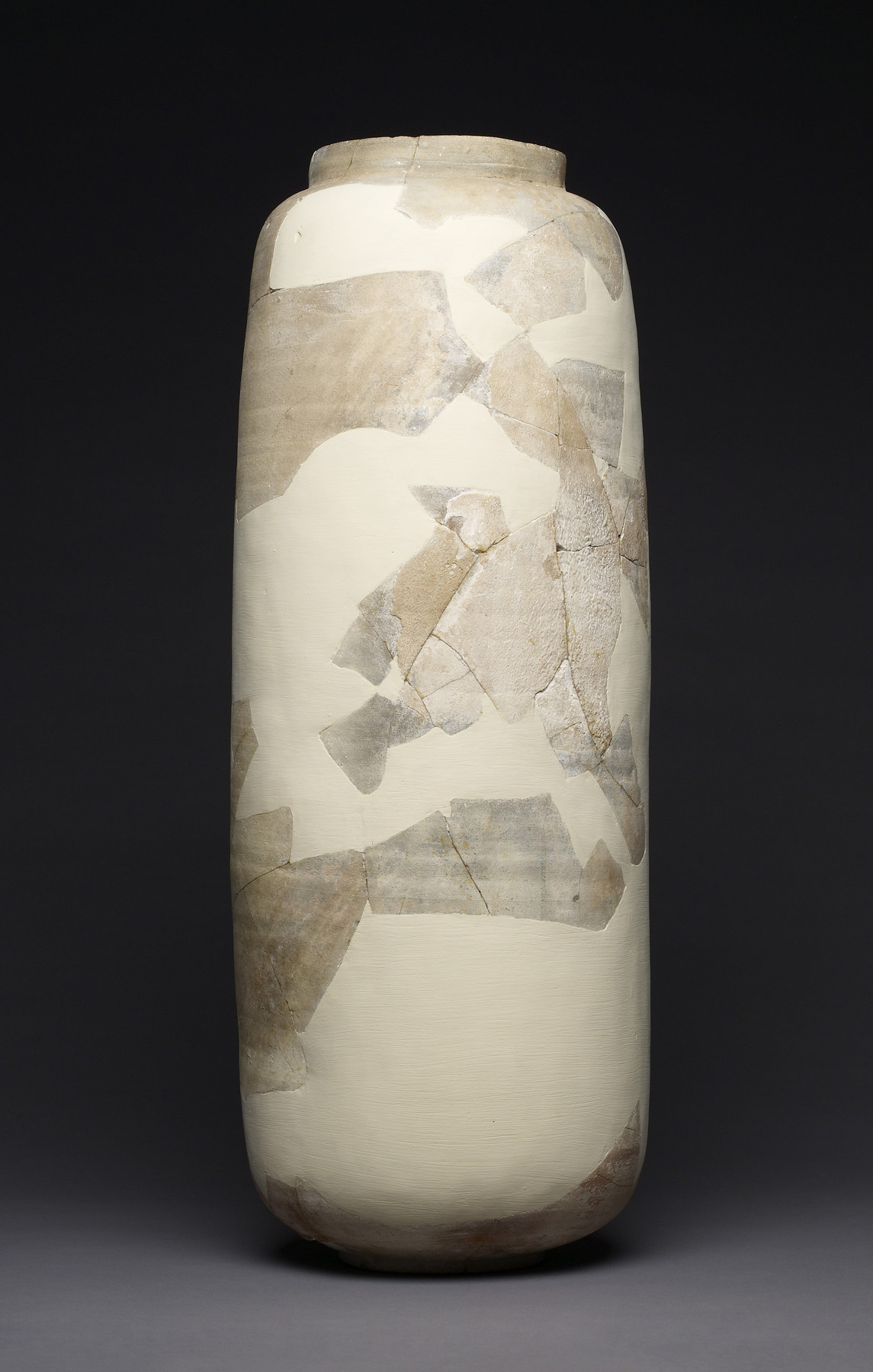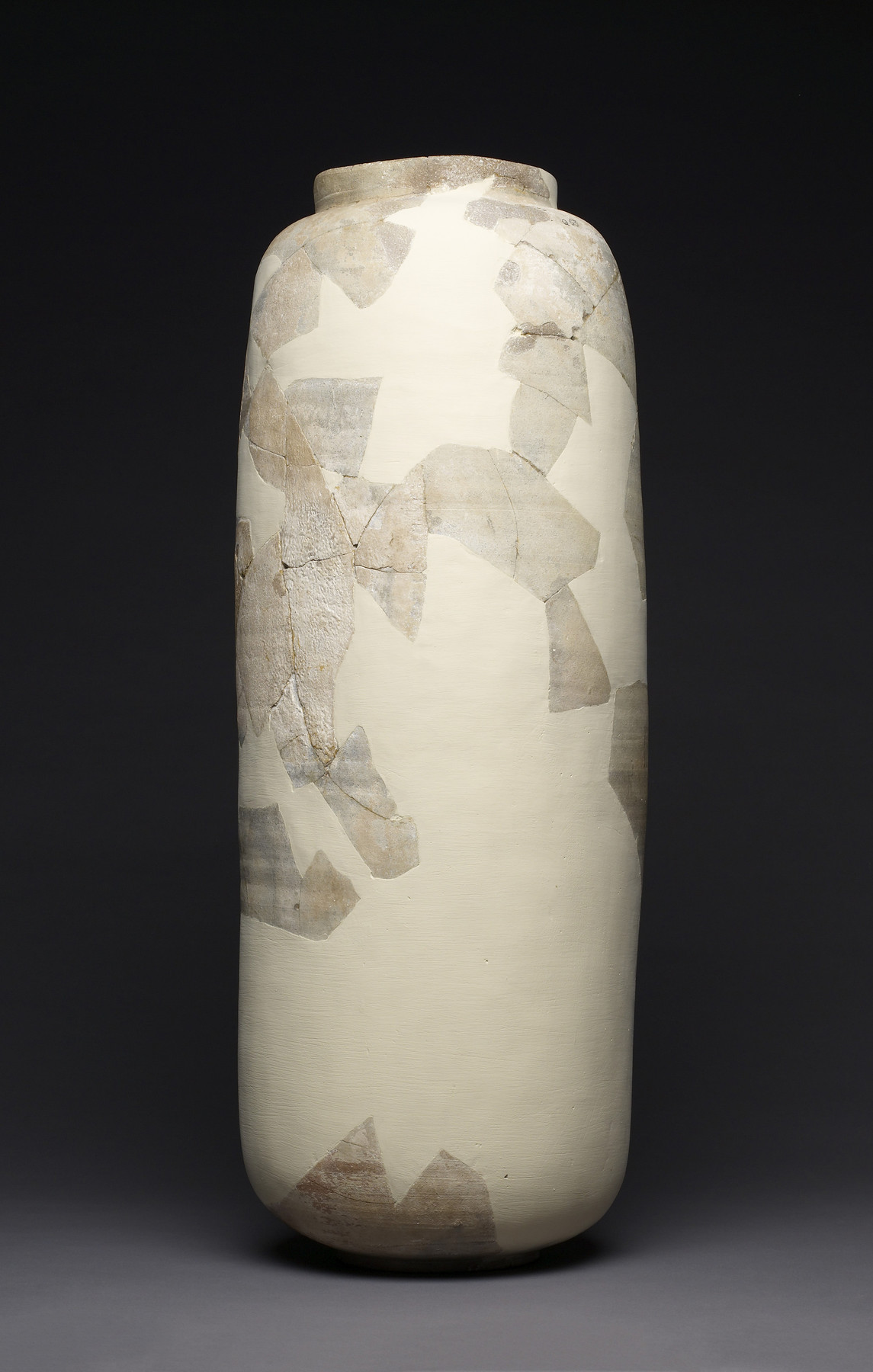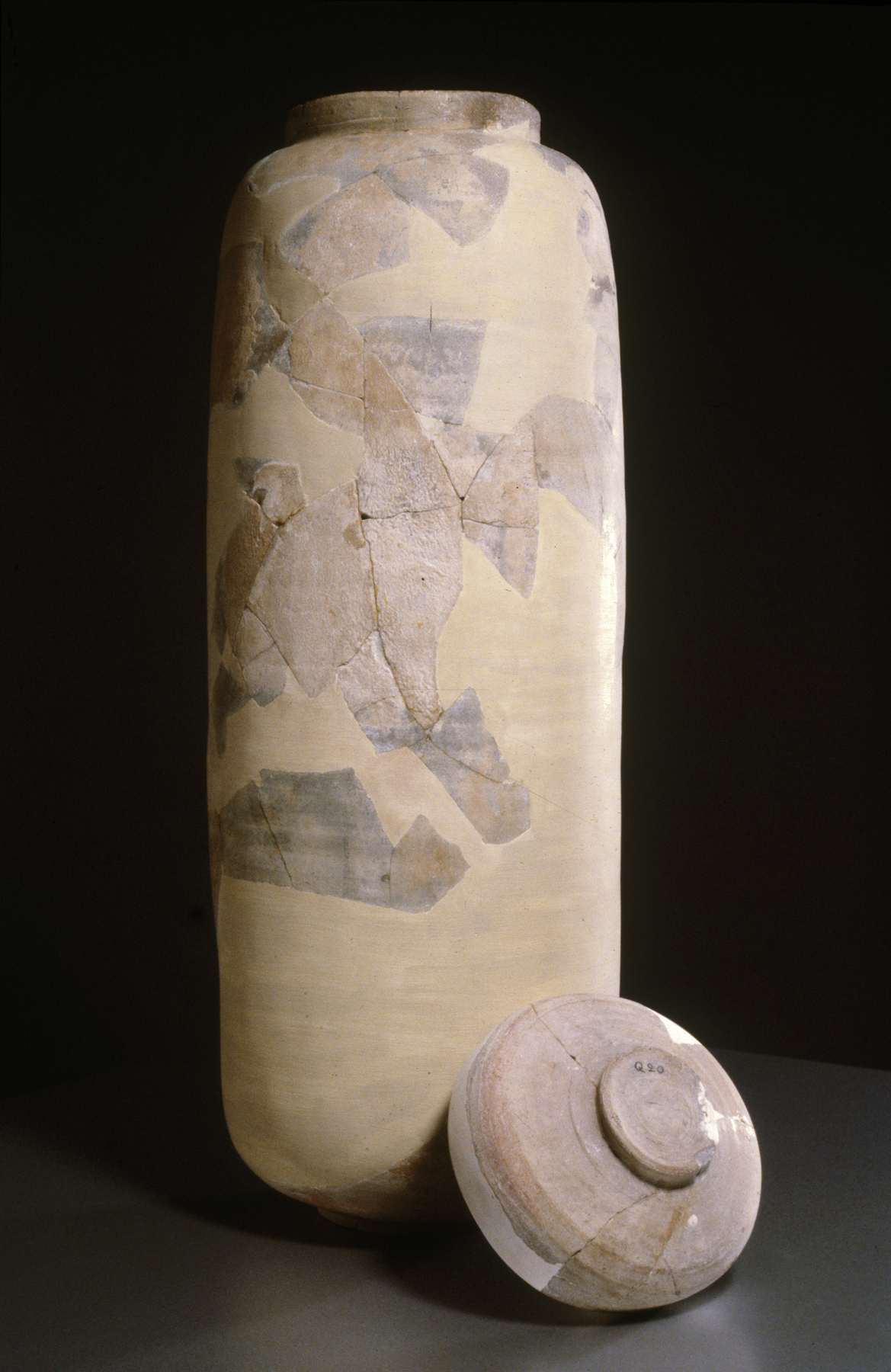Scroll Jar with Lid
(Ancient Near East )
The tall, narrow form of this jar accommodated the shape of the rolled parchment scrolls stored inside. This jar was shattered into dozens of pieces, many of which are now lost. It was likely repaired from the pieces of more than one jar, as different clay fabrics are distinguishable by the variation in color of the clay, from a cool, pale blue to warmer reddish tones. The bowl-shaped lid was also repaired, and while it may not have belonged to this particular jar in antiquity, it is the type of lid commonly used to seal scroll jars.
Jars such as this one were used frequently by the ancient Jews to store manuscript rolls of parchment, papyrus, and copper. Between 1948 and 1956, approximately 80 intact manuscript rolls and more than 20,000 fragments were discovered in eleven caves near the Dead Sea–including Ein Feshkha where this jar was found. Known as the Dead Sea Scrolls, they preserve parts of the Hebrew Bible, biblical commentary, liturgical texts, and non-biblical texts such as “The Community Rule” or so-called “War Scroll,” providing a complex picture of Jewish culture during the 1st century CE.
Inscription
Provenance
Provenance (from the French provenir, 'to come from/forth') is the chronology of the ownership, custody, or location of a historical object.
Government of Jordan [said to be from Ein Feshkha]; Walters Art Museum, 1952, by purchase [through the Palestine Archaeological Museum at Jerusalem].
Exhibitions
| 1978 | In Search of Ancient Treasure: 40 Years of Collecting. The Walters Art Gallery, Baltimore. |
Conservation
| Date | Description | Narrative |
|---|---|---|
| 9/30/1974 | Treatment | loss compenstation |
| 4/7/2018 | Treatment | inpainted |
| 4/7/2018 | Treatment | The fills were inpainted with one solid color. |
Geographies
Israel (Ein Feshkha (Einot Tzukim)) (Place of Origin)
Measurements
H: 29 5/8 × Diam: 10 1/4 in. (75.3 × 26 cm)
Credit Line
Museum purchase with funds provided by the S. & A.P. Fund, 1952
Location in Museum
Not on view
Accession Number
In libraries, galleries, museums, and archives, an accession number is a unique identifier assigned to each object in the collection.
In libraries, galleries, museums, and archives, an accession number is a unique identifier assigned to each object in the collection.
48.2058

